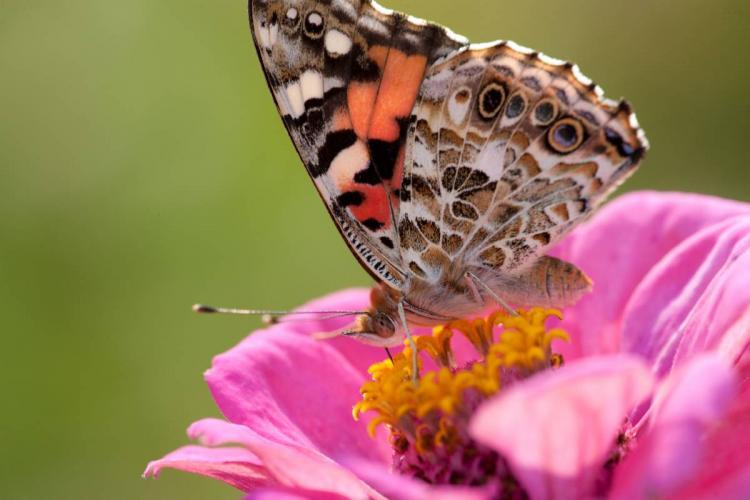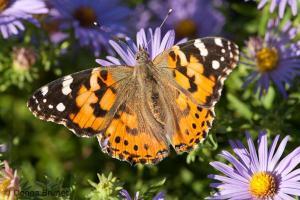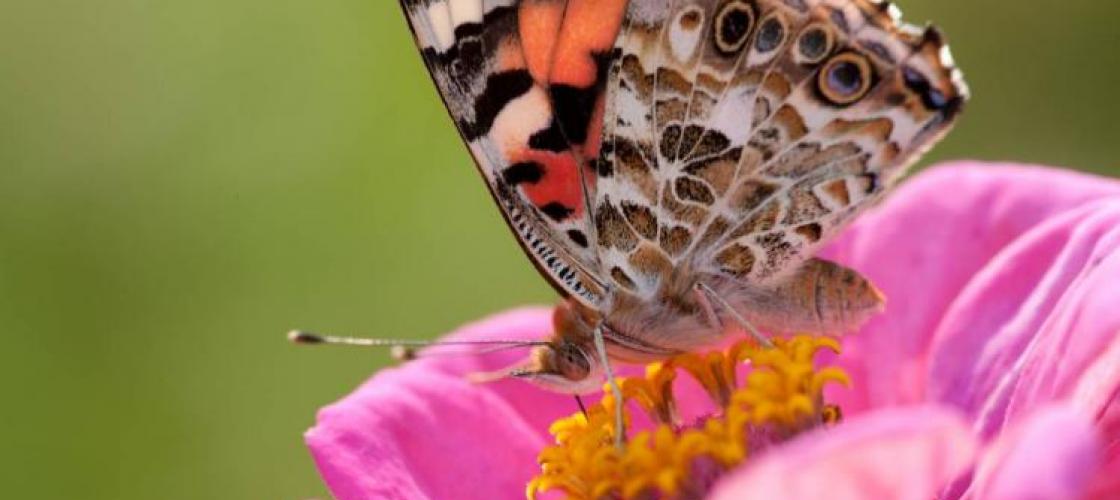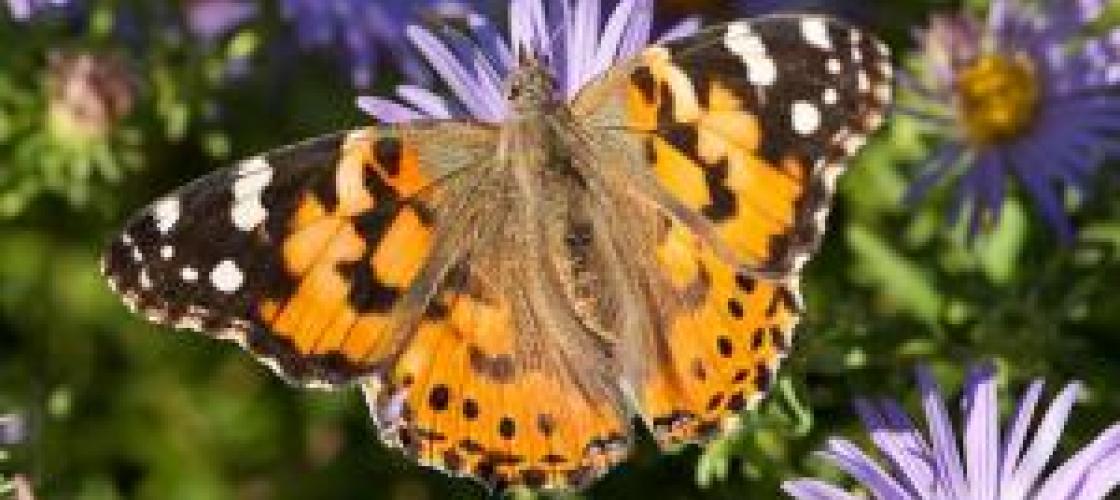This butterfly is known by three names; Cosmopolitan for its global span, Thistle for its favored food, and Painted Lady for its impressive display.
Painted lady butterflies migrate like monarchs. Unlike them, they don’t seem to follow seasonal or geographic patterns. They can have what’s known as irruptive migrations where mass numbers can be seen around September flowers.
Late summer generations can fly 100 miles per day during southern migration. They can reach speeds of nearly 30 miles per hour. Painted ladies are long distance northern migrants and usually return before monarchs.
Look for their caterpillars on thistle plants. And try to spy their silky tents. It takes new butterflies a half hour to break through their chrysalis and another few hours to dry out before first flight.
Painting the Picture of the Painted Lady
- Painted lady caterpillars are greenish yellow to lavender, with yellowish spines and a yellow stripe on the sides. They construct silk shelters on the leaves of host plants that protect them as they chew. Their favorite food plants are thistles.
- Painted ladies arrive from the south in late March and fly until November. There are multiple broods.
- They frequently lay eggs on host plants within patches of nectar flowers even if those plants don’t provide for optimal caterpillar growth. Increasing a female’s sugar consumption increases her longevity and the total number of eggs she lays.
- Painted ladies lay a large number of small eggs in a lifetime, opting for quantity over quality.
- The easiest way to differentiate between the painted lady and the American lady is to look at the eyespots on the hindwing underside: the painted lady has 4 small ones, while the American lady has 2 large ones.
- With painted ladies so common and widespread, they are a favorite species for schoolchildren to witness the process of larval growth and metamorphosis.
For more on the painted lady butterfly, visit our Field Guide.




Recent Posts
























